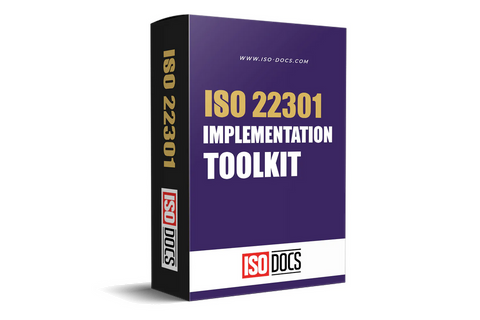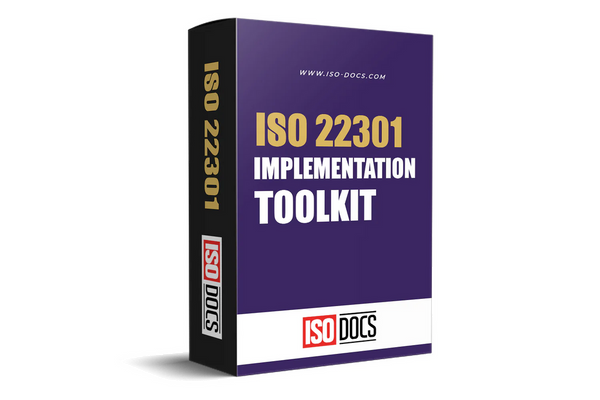ISO 22301 : Request for Change Form
ISO 22301 Request for Change (RFC) Form, a crucial tool in maintaining the integrity and effectiveness of our Business Continuity Management System (BCMS). This form serves as a structured mechanism for proposing, evaluating, and implementing changes within the organization in alignment with ISO 22301:2019 standards. Changes may arise from various sources, including process enhancements, technology upgrades, or regulatory modifications.

The RFC Form ensures a systematic approach to assessing the impact of proposed changes on our business continuity capabilities, promoting transparency and accountability throughout the change management process. Please use this form to submit change requests, facilitating a streamlined and compliant approach to managing modifications within our BCMS.
Importance of ISO 22301 Request for Change Form Template
- Standardized Change Management:The ISO 22301 Request for Change Form Template provides a standardized approach to managing changes within the organization's Business Continuity Management System (BCMS).
- Compliance with ISO 22301:2019:Adhering to the ISO 22301 Request for Change Form Template ensures compliance with the ISO 22301:2019 standard for Business Continuity Management Systems.
- Systematic Evaluation of Changes:The form facilitates a systematic evaluation of proposed changes, requiring detailed documentation of the nature, scope, and impact of each change on business continuity.
- Transparency in Change Processes:The use of the RFC Form promotes transparency by documenting all relevant details of a change request.
- Risk Mitigation and Impact Assessment:The form incorporates sections for risk assessment and impact analysis, aiding in the identification and mitigation of risks associated with proposed changes.
- Enhanced Communication and Collaboration:By formalizing the change request process, the form enhances communication and collaboration among stakeholders.
- Traceability and Accountability:Each change request is assigned a unique identifier, enabling easy traceability throughout the change management process.
Key components of ISO 22301 Request for Change Form Template
Requestor Information:
- Name and Contact Details:Information about the person initiating the change request.
- Role/Position:The role or position of the individual within the organization.
Scope of Change:
- Affected Processes/Systems:Identification of the processes or systems impacted by the change.
- Business Units:The specific business units or departments influenced by the change.
Rationale for Change:
- Purpose:The reason behind the proposed change and the expected benefits.
- Alignment with Business Objectives:How the change aligns with the overall business continuity and organizational objectives.
Impact Assessment:
- Risk Analysis:Evaluation of potential risks associated with the change.
- Impact on Business Continuity:Assessment of how the change may affect the organization's business continuity capabilities.
Proposed Mitigation Strategies:
- Risk Mitigation Plan:Clear strategies and actions to mitigate identified risks.
- Contingency Plans:Predefined plans to address unexpected issues during the change implementation.
Approval Workflow:
- Approver Roles:Specification of roles responsible for approving the change (e.g., change review board, department heads).
- Authorization Levels:Clear delineation of authorization levels required for approval.
Timeline and Milestones:
- Proposed Implementation Date:The suggested date for implementing the change.
- Milestone Schedule:Key milestones and checkpoints throughout the change process.
Documentation and Attachments:
- Supporting Documents:Any additional documents or references supporting the change request.
- Previous Change References:Links or references to previous change requests related to the current one.
Change Status and Tracking:
- Current Status:The current stage of the change request (e.g., pending, approved, rejected).
- Change History:A log of changes made to the request, providing a historical record.
Post-Implementation Review:
- Lessons Learned:Space for documenting lessons learned from the change implementation.
- Feedback:Feedback from stakeholders after the change has been implemented.

The Benefits of ISO 22301 Request for Change Form Template
- Standardized Change Management:Consistency in change management processes ensures that changes are systematically assessed, authorized, and implemented, reducing the risk of oversights or errors.
- Enhanced Compliance with ISO 22301:2019:Improved compliance ensures that the organization adheres to globally recognized best practices in business continuity, enhancing its resilience.
- Improved Documentation and Traceability:This documentation facilitates traceability, enabling stakeholders to track the progression of a change from initiation to implementation and creating a valuable audit trail.
- Transparent Change Processes:Transparency in change processes allows stakeholders to understand the reasons behind proposed changes, fostering trust and informed decision-making.
- Efficient Risk Management: Identification and mitigation of risks associated with changes, leading to more informed decision-making and a proactive approach to risk management.
- Streamlined Authorization Workflow: This clear authorization workflow streamlines the approval process, ensuring that changes are reviewed and approved by the appropriate personnel, reducing delays and potential bottlenecks.
- Effective Communication and Collaboration: Improved collaboration ensures that all relevant perspectives are considered, leading to well-informed decisions and successful change implementations.
- Accountability for Change: This establishes accountability, making it clear who is responsible for proposing, approving, and implementing changes, contributing to a culture of responsibility.
- Facilitates Continuous Improvement: The documentation of lessons learned supports a culture of continuous improvement, enabling the organization to refine its change management processes over time.
- Audit Preparedness: Organizations can confidently demonstrate their adherence to ISO 22301 and the effectiveness of their change management processes during internal and external audits.
Conclusion
In conclusion, the ISO 22301 Request for Change Form Template stands as a pivotal instrument in fortifying our Business Continuity Management System. By providing a standardized and transparent framework for managing changes, this template ensures compliance with ISO 22301:2019 standards, fostering a culture of accountability and risk-aware decision-making.
The document's meticulous structure, including detailed change descriptions, impact assessments, and mitigation strategies, not only facilitates efficient change authorization but also establishes a comprehensive audit trail for future reference. As we embrace the template, we reinforce our commitment to resilience, continuous improvement, and the systematic management of changes critical to the sustained effectiveness of our business continuity efforts.



